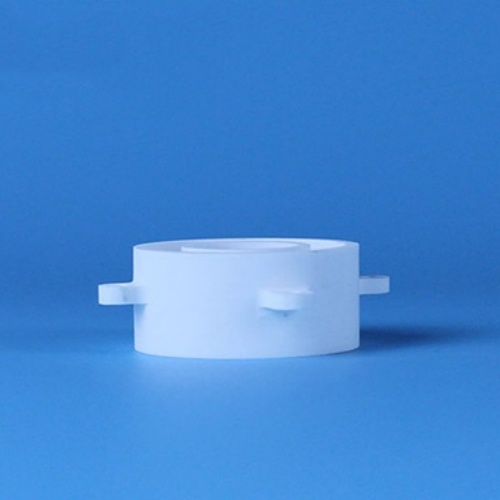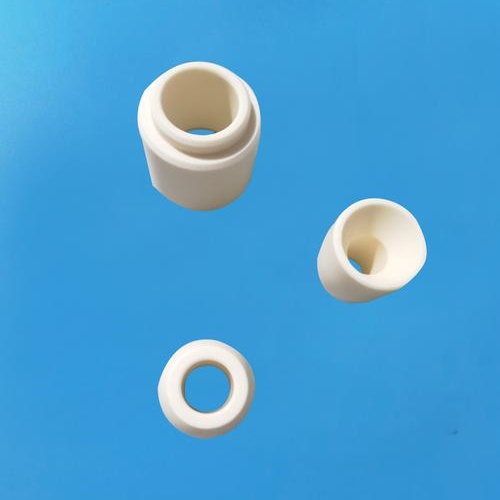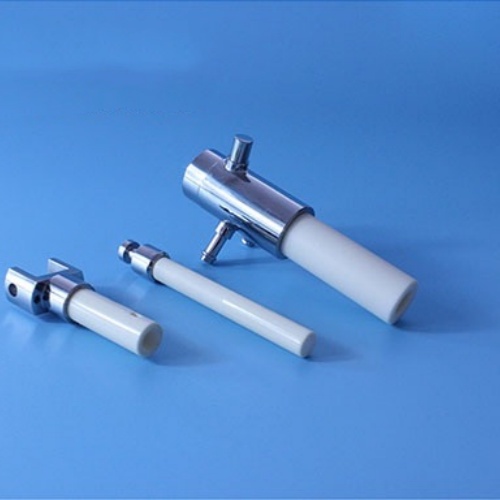What are the thermal conductivity and heat dissipation properties of aluminum nitride ceramics
1、 Thermal conductivity characteristics of aluminum nitride ceramics
Aluminum nitride ceramics (AlN) have attracted much attention due to their excellent thermal conductivity. Its theoretical thermal conductivity can reach 320 W/(m · K), while the thermal conductivity of actual commercial products is generally between 170 W/(m · K) and 260 W/(m · K). This high thermal conductivity is mainly due to its unique crystal structure and low atomic mass, which enables it to efficiently conduct heat.
Compared with other common ceramic materials, the thermal conductivity of aluminum nitride ceramics is much higher than that of aluminum oxide ceramics (Al ₂ O3, with a thermal conductivity of about 20-30 W/(m · K)) and silicon nitride ceramics (Si ∝ N ₄, with a thermal conductivity usually lower than 150 W/(m · K)). In addition, the thermal conductivity of aluminum nitride ceramics is less affected by temperature, especially above 200 ℃, and its thermal conductivity stability is better than that of materials such as beryllium oxide (BeO).

2、 Factors affecting thermal conductivity
Although aluminum nitride ceramics have high theoretical thermal conductivity, the thermal conductivity in actual products is often limited by various factors:
- Oxygen content: Aluminum nitride has a strong affinity for oxygen, and oxygen impurities can easily diffuse into the AlN lattice during sintering, forming aluminum vacancies and causing lattice defects, thereby significantly reducing thermal conductivity.
- Density: The higher the density of a material, the higher its thermal conductivity. The selection of sintering process and sintering additives has a significant impact on the density and thermal conductivity of aluminum nitride ceramics.
- Powder purity: High purity aluminum nitride powder (with oxygen content less than 1%) is the key to preparing high thermal conductivity ceramics. The particle size and microstructure of the powder also affect the thermal conductivity of the final product.
- Microstructure: Microstructure factors such as grain size, number and distribution of grain boundaries can also affect thermal conductivity.

3、 Heat dissipation performance
The high thermal conductivity of aluminum nitride ceramics makes them excellent in heat dissipation applications, as they can quickly transfer heat from high-temperature areas to low-temperature areas, effectively reducing the operating temperature of electronic devices. Its main heat dissipation performance characteristics include:
- Low thermal expansion coefficient: The thermal expansion coefficient of aluminum nitride ceramics ranges from 3.2 × 10 ⁻⁶/℃ to 4.6 × 10 ⁻⁶/℃, which is highly compatible with semiconductor materials such as silicon chips (3.0 × 10 ⁻⁶/℃) and gallium arsenide (5.8 × 10 ⁻⁶/℃), effectively reducing interface cracking caused by thermal stress.
- High temperature stability: Aluminum nitride ceramics can still maintain structural integrity in high temperature environments (such as 400 ℃ thermal shock testing and 1000 ℃ aerobic environment), making them suitable for applications that require frequent thermal cycling.
- Insulation performance: Aluminum nitride ceramics have good electrical insulation properties, with a room temperature resistivity greater than 10 ¹⁶Ω· m, and can be used as insulation substrates for electronic devices.

4、 Application Fields
The high thermal conductivity and excellent heat dissipation performance of aluminum nitride ceramics make them widely used in multiple high-tech fields:
- Electronics industry: Aluminum nitride ceramic substrates can be used to package high-power integrated circuits, insulated gate bipolar transistors (IGBT) and other power devices, which can significantly reduce chip junction temperature, improve device reliability and lifespan.
- Semiconductor industry: Aluminum nitride ceramics can be used to manufacture semiconductor packaging substrates, and their thermal expansion coefficient matches well with silicon materials, which can reduce thermal stress.
- Aerospace: The high temperature resistance and high thermal conductivity of aluminum nitride ceramics make them suitable for heat dissipation in high-temperature electronic devices in the aerospace field.
- Automotive electronics: In the battery management system (BMS) of electric vehicles, aluminum nitride ceramic heat sinks can effectively manage battery heat and ensure stable operation of the battery under different working conditions.

Aluminum nitride ceramics have broad application prospects in modern electronics and semiconductor industries due to their excellent thermal conductivity and heat dissipation performance, and are expected to play an important role in more high-tech fields in the future.
Brudeze Ceramics supplies and sells a wide range of high-quality quartz glass, including alumina ceramics, zirconia ceramics, silicon nitride ceramics, aluminum nitride ceramics, silicon carbide ceramics, boron carbide ceramics, bioceramics, machinable ceramics, etc. We can meet the customization requirements of various ceramic products.
Tags: boron carbide ceramics
PREVIOUS:What are the applications of aluminum nitride ceramics in high-frequency circuits
NEXT:Application of Aluminum Nitride Ceramics in Medical Electronic Devices
CATEGORIES
LATEST NEWS
- What is Macor processable g...
- The material properties and...
- The reason for the high pri...
- What are the preparation me...
- Why modify aluminum nitride...
- Thermal conductivity values...
- What is the thermal expansi...
- Thermal shock resistance of...
- The average coefficient of ...
- What is high alumina ceramic
